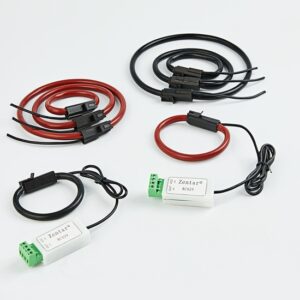Grasping Basic Concepts
The Essence of Current Transformers
Current transformers are fundamental devices in power systems, adept at converting high currents into proportionately lower currents. They are pivotal in both measurement and protection applications within power systems. Their key role is energy conversion, where they transduce high input currents to manageable, low output currents proportional to the original ones.
The Operating Principle of Current Transformers
The workings of current transformers are hinged on Faraday’s electromagnetic induction law. A high current flowing through the transformer’s primary coil generates a magnetic field, which, in turn, induces a current in the transformer’s core. This induced current is then transformed into an auxiliary coil current.
Identifying Errors in Current Transformers
Ratio Error
A common error in current transformers is the ratio error. It emerges when the transformer fails to convert current precisely according to a predefined ratio. Often, the non-linear characteristics of the core and changes in coil impedance contribute to this error.
Phase Error
Phase error is another type of error which is defined by the phase angle difference between the transformer’s output and input current. This discrepancy can significantly impact the operation and protection mechanisms of power systems.
Deciphering Factors Influencing Current Transformer Errors
Coil Impedance
Coil impedance is a significant contributor to current transformer accuracy. An increased impedance results in a reduced output current, thereby inducing ratio errors.
Core Saturation
Core saturation significantly influences transformer performance. Once the core reaches saturation, the transformer’s performance plummets, leading to potential ratio and phase errors.
Frequency
The frequency of input current impacts current transformer performance. Any fluctuations in frequency induce changes in impedance, thus altering the transformer’s accuracy.
Temperature
Temperature variations affect current transformer performance. As temperatures rise, the coil’s resistance increases, inducing ratio and phase errors.
Load
Alterations in load can negatively impact transformer performance. An increase in load may escalate the transformer’s error margin.
Insulation
Insulation performance is paramount to current transformer accuracy. Insulation damage can introduce errors within current transformers.
Manufacturing Process
The manufacturing process of current transformers also determines their performance. Advancements and improvements in these processes can significantly diminish the errors in current transformers.
Mitigating Current Transformer Errors
Selecting an Appropriate Current Transformer
The first step towards reducing transformer errors is choosing a suitable current transformer. It should boast exceptional performance and adequate capacity to meet the demands of the power system.
Adhering to Installation and Usage Guidelines
When installing and using current transformers, ensure to uphold the insulation’s integrity, avoid high temperatures, and conduct regular inspections and maintenance to sustain its performance and precision.
In Conclusion
Comprehending the various factors influencing current transformer errors is crucial for their proper utilization and enhancing the efficiency and safety of power systems. By understanding these factors, we can effectively reduce or avoid current transformer errors.
FAQs
What does the ratio error of a current transformer entail?
Ratio error occurs when a current transformer fails to convert current precisely according to a predetermined ratio.
What are the key factors influencing current transformer errors?
The primary factors include coil impedance, core saturation, frequency, temperature, load, insulation, and the manufacturing process.
How can we minimize the error of current transformers?
We can primarily achieve error reduction through the selection of a suitable transformer, correct installation and usage, and regular maintenance.
How do current transformer errors impact the power system?
Errors in current transformers mainly affect the power system’s measurement and protection mechanisms. Both ratio and phase errors could instigate instability in power system operation, potentially leading to accidents.
What is the operational principle of current transformers?
Current transformers operate based on Faraday’s law of electromagnetic induction. When a high current flows through the primary coil, a magnetic field is generated, inducing a current in the transformer’s core. This induced current is then transformed into an auxiliary coil current.





